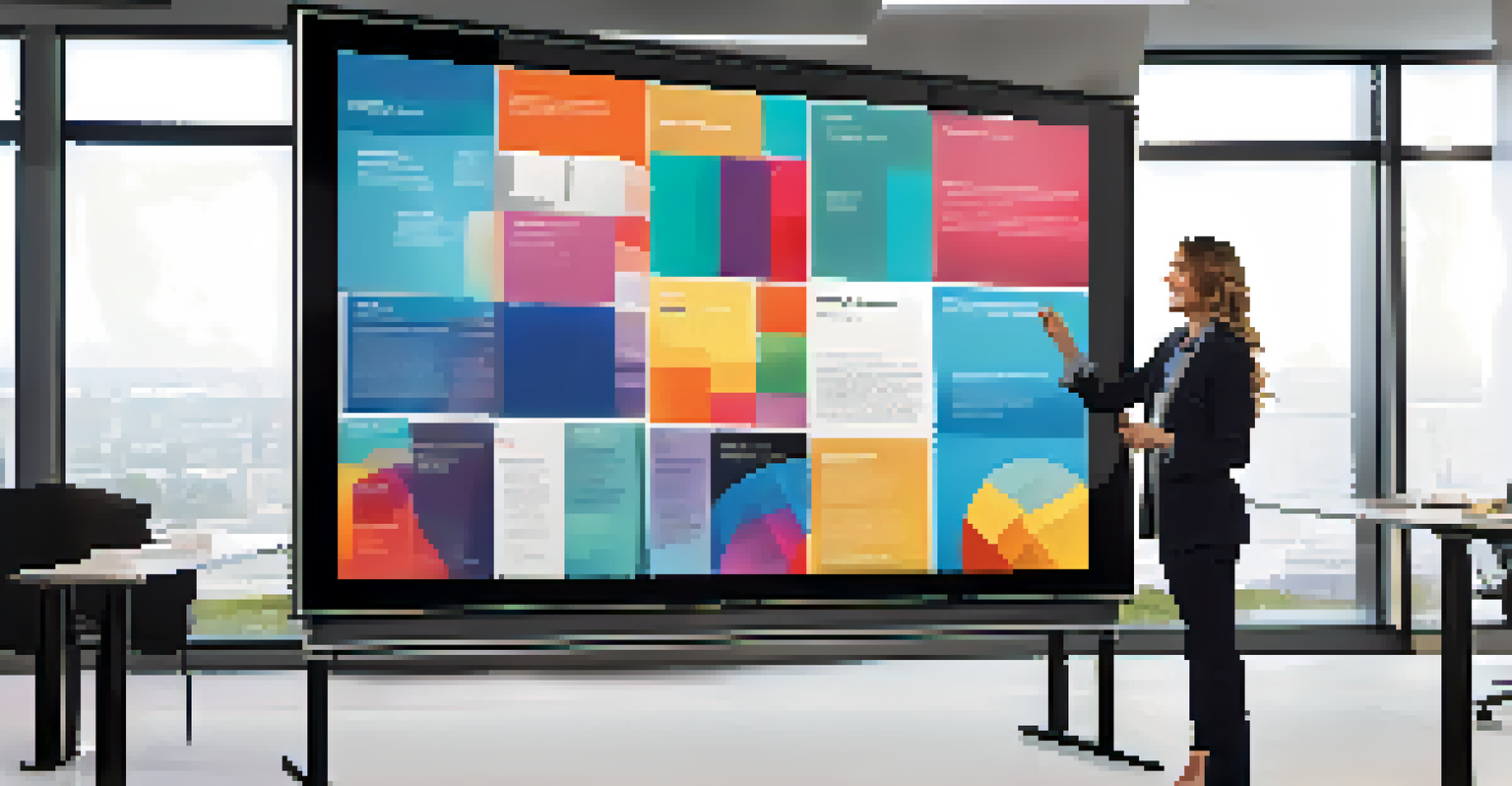Incorporating Feedback in Digital Portfolio Development

Understanding the Importance of Feedback in Portfolio Development
Feedback is a crucial part of developing a digital portfolio, as it helps identify strengths and weaknesses. When you share your work with others, you gain new perspectives that can enhance your projects. This process not only improves the quality of your portfolio but also fosters personal and professional growth.
Feedback is the breakfast of champions.
By embracing feedback, you can refine your skills and create a more polished representation of your abilities. Think of feedback as a compass guiding you toward better choices in your portfolio development. Without it, you might miss out on valuable insights that could elevate your work.
Moreover, the act of seeking feedback shows your willingness to learn and adapt. This openness can lead to stronger connections within your network, as others see you as someone who values growth and collaboration. Ultimately, incorporating feedback can transform your portfolio from a simple collection of work to a dynamic showcase of your journey.
Creating a Feedback-Friendly Environment
To effectively incorporate feedback, you need to create an atmosphere that encourages honest and constructive criticism. This means choosing the right people to review your work, such as mentors, peers, or industry professionals. A safe space for sharing allows others to provide input without fear of hurting your feelings.

You can facilitate this environment by being clear about the type of feedback you seek. For instance, you might ask for advice on design choices or clarity of presentation. This targeted approach helps reviewers focus their insights on areas where you genuinely want to improve.
Feedback Fuels Portfolio Growth
Incorporating feedback enhances your digital portfolio by identifying strengths and opportunities for improvement.
Remember to express gratitude for all feedback received, regardless of whether you agree with it or not. This encourages ongoing dialogue and shows that you value the time and effort others put into helping you. By fostering such an environment, you're likely to receive richer and more useful feedback.
Choosing the Right Time to Seek Feedback
Timing is everything when it comes to seeking feedback on your digital portfolio. Ideally, you should reach out for feedback at various stages of your portfolio development. Early feedback can help you steer your project in the right direction, while later feedback focuses on refinement and polish.
We all need people who will give us feedback. That’s how we improve.
For example, after you've completed a draft of your portfolio, consider sharing it with a trusted colleague. Their insights can help you identify any gaps or areas that may need further development. Waiting too long to seek feedback can lead to more significant issues down the line that might be harder to address.
Additionally, be mindful of your own emotional readiness to receive feedback. If you're feeling particularly sensitive about your work, it might be best to wait until you're in a more receptive mindset. This way, you can approach feedback with an open heart and mind, ready to learn and grow.
Types of Feedback to Consider
When gathering feedback for your digital portfolio, it's essential to consider different types of feedback. You can categorize feedback into three main types: positive, constructive, and actionable. Positive feedback reinforces what you're doing well, while constructive feedback identifies areas for improvement.
Actionable feedback is particularly valuable because it provides specific suggestions on how to enhance your work. For instance, instead of saying, 'This part is unclear,' a more actionable comment would be, 'Consider adding examples to clarify your point.' This makes it easier for you to implement changes.
Create a Safe Feedback Space
Establishing an environment that encourages honest criticism allows for richer and more useful insights.
By seeking a balanced mix of these feedback types, you'll gain a comprehensive understanding of your portfolio's strengths and weaknesses. This holistic approach enables you to make informed decisions while refining your work, ensuring that your portfolio shines.
Using Feedback to Drive Iteration
Feedback should not just be a one-time event; it should drive a cycle of iteration in your portfolio development. After receiving feedback, take some time to reflect on the insights you've gained and how they align with your goals. This reflection process can spark new ideas and improvements that you might not have considered before.
For example, if multiple reviewers highlight a specific design flaw, it’s worth revisiting that aspect and brainstorming alternatives. Each round of feedback can lead to significant enhancements, gradually transforming your portfolio into a stronger representation of your skills and style.
Remember, iteration is a natural part of the creative process. By continuously refining your work based on feedback, you’re ensuring that your digital portfolio evolves alongside your growth as a professional. This ongoing commitment to improvement can set you apart in a competitive landscape.
Documenting Feedback for Future Reference
As you gather feedback, it's beneficial to document the insights and suggestions you receive for future reference. Keeping track of feedback can help you recognize patterns in the comments, which may indicate recurring strengths or weaknesses in your work. This ongoing log of feedback serves as a valuable resource as you continue to develop your portfolio.
Consider creating a simple spreadsheet or a dedicated section in your portfolio where you summarize feedback. You can categorize it by themes, such as design, content clarity, or audience engagement. This organized approach allows you to quickly identify areas that need attention in your future projects.
Iterate and Celebrate Progress
Using feedback to drive iteration not only improves your work but also highlights your growth as a creator.
Additionally, when you revisit your portfolio later, you can reflect on how you've implemented past feedback. This not only demonstrates your growth but also reinforces the importance of feedback in your creative journey, making you more effective in future iterations.
Celebrating Your Growth Through Feedback
Incorporating feedback into your digital portfolio development isn’t just about improvement; it’s also about celebrating your growth. After implementing feedback and making changes, take a moment to reflect on how far you've come. Recognizing your progress can be incredibly motivating and help you appreciate the journey.
You might even consider showcasing a 'before and after' section in your portfolio, highlighting how feedback has influenced your work. This not only demonstrates your willingness to adapt but also illustrates your growth as a creator. Seeing tangible results from feedback can inspire you to keep pushing forward.

Finally, don’t forget to share your milestones with your network. Whether it’s a social media post or a casual conversation, celebrating your achievements reinforces the value of feedback in your creative process. It reminds you and others that growth is a continuous journey, fueled by collaboration and learning.